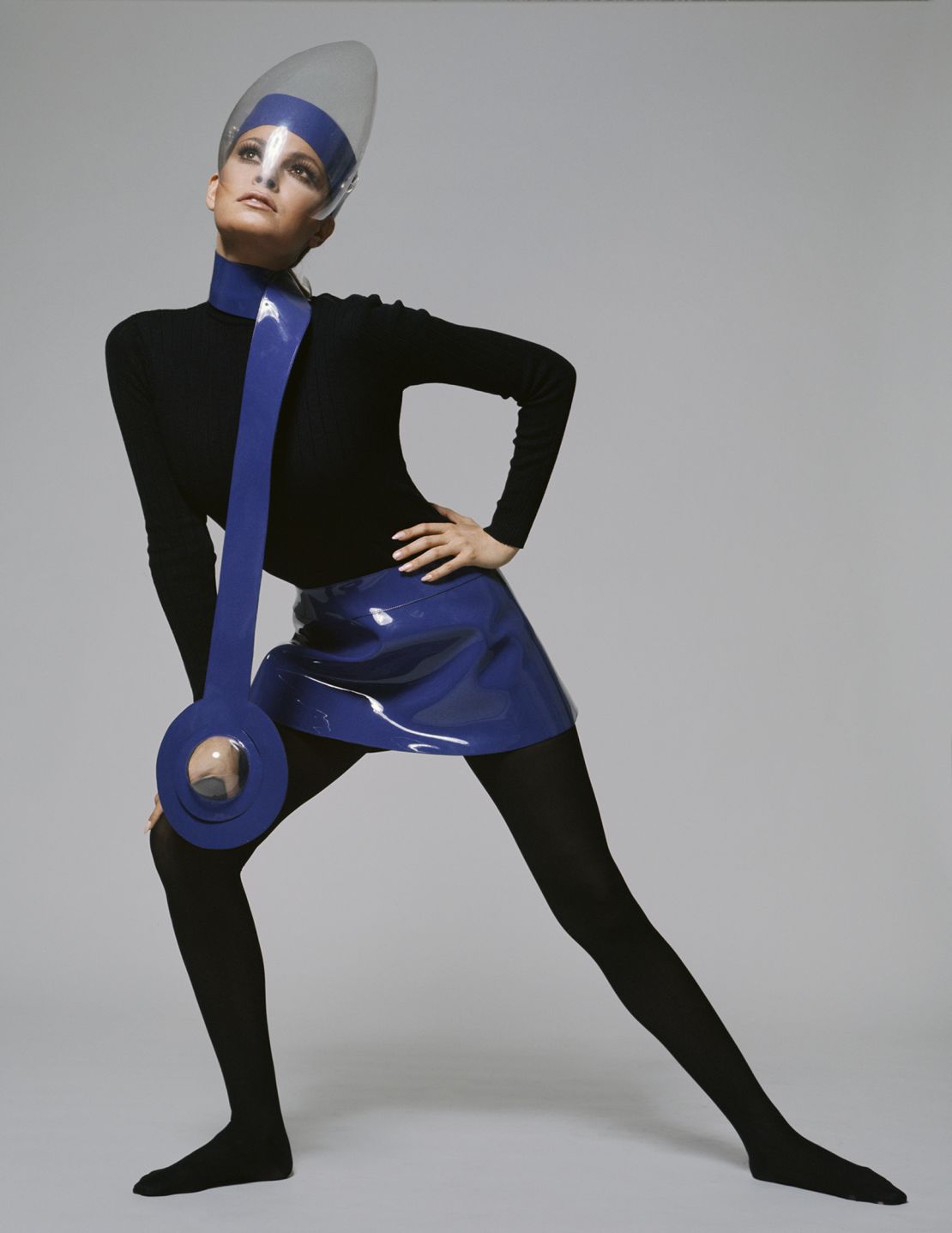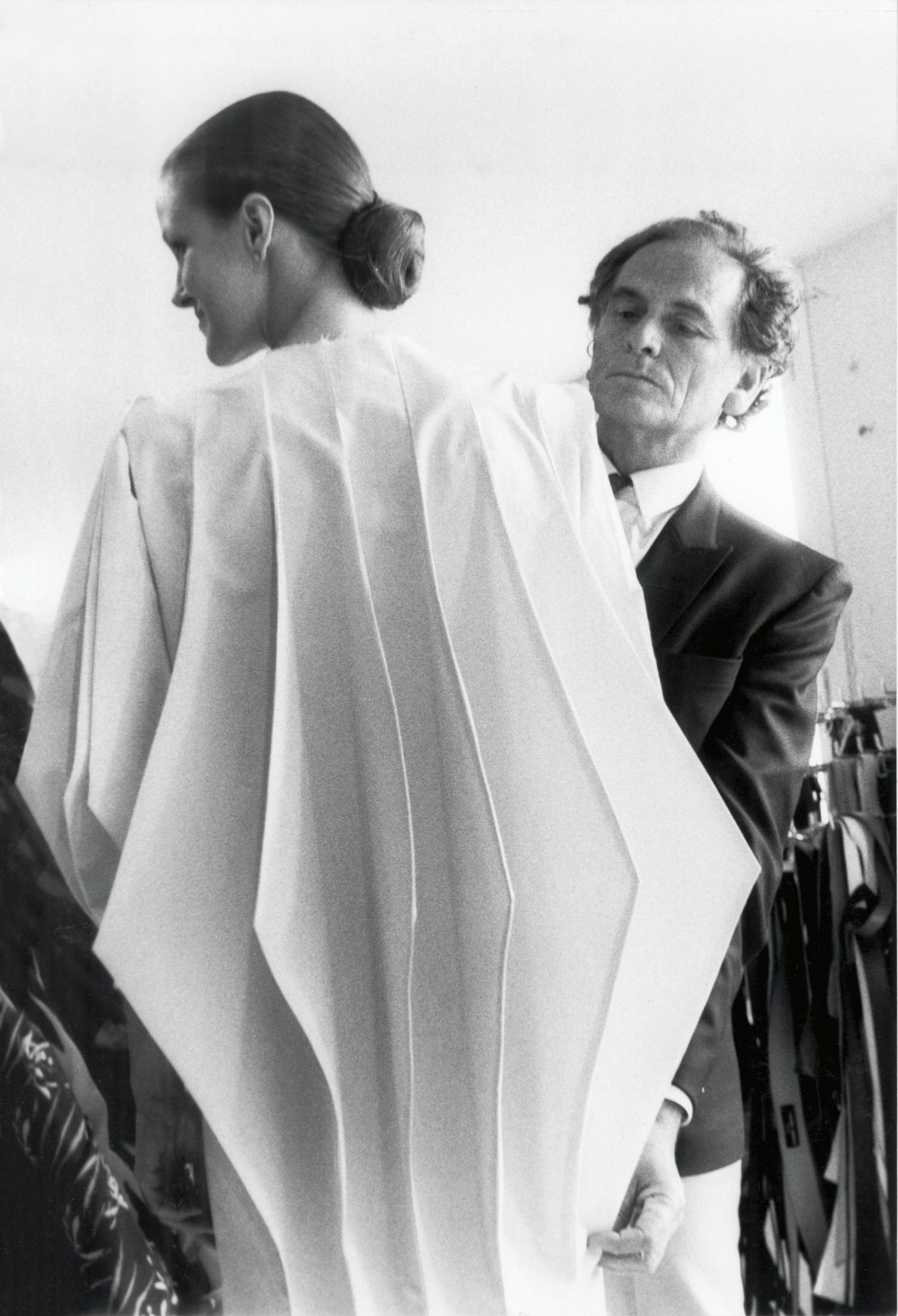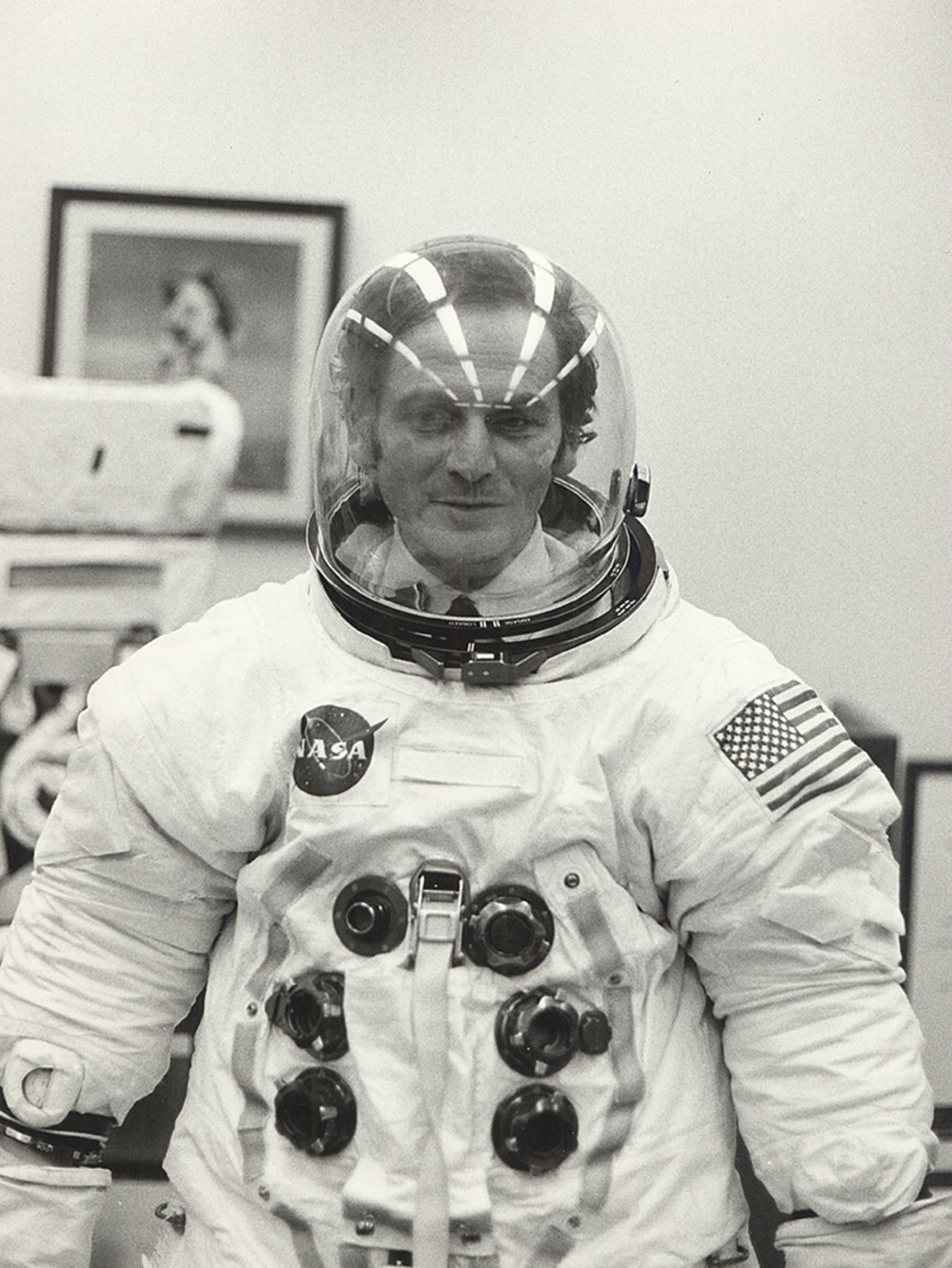Years before the Apollo 11 mission, and well before the release of Stanley Kubrick’s “2001: A Space Odyssey,” fashion designer Pierre Cardin, who founded his eponymous label in Paris in 1950, was actively imagining life on the galactic frontier. His outré mod fashions gave contours to the visual and stylistic zeitgeist of the Space Age.
“My favorite garment is the one I invent for a life that does not yet exist,” he’s often quoted saying, “the world of tomorrow.”
Cardin reinvented the miniskirt with razor-sharp, geometric silhouettes, jewelry-sized adornments, large zippers and cutouts. He made knitwear unitards, codpieces and jumpsuits for any gender. Innovative synthetic materials like acrylic, vinyl, sequins, Lurex and shimmering metals often featured in his designs. He worked with af material called Dynel, a textile that could be heat-molded into complex patterned folds, marketing a version of it under the name Cardine.
A designer of ensembles, he dreamed up domed glass helmets and architectural hats in punchy, block color. He produced otherworldly outfits and captured the public imagination for a day when space travel might be commonplace.

Born in Italy as the youngest of 10 siblings, Cardin moved to France as a young child when his family fled to Saint-étienne to escape fascism. He worked several part-time jobs as a student, including work with a tailor, before leaving for Paris in 1945 with dreams of becoming a couturier.
Once there, he worked for the House of Paquin and Elsa Schiaparelli, and later worked under Christian Dior during the “New Look” era, before striking out to establish his own couture house in 1950. His elegant designs found patrons among wealthy socialites and the likes of US First Lady Jacqueline Kennedy. On the screen and in magazines, meanwhile, Jeanne Moreau, Brigitte Bardot and Mia Farrow telegraphed his talents to a mainstream pop audience.
It was Cardin’s early tutelage in traditional tailoring that allowed him to deftly deconstruct conventions in the futuristic designs that became his trademark. By the late 1950s, he had created his first menswear collection, later designing an iconic collection of collarless suits for The Beatles.

The 1964 launch of Cardin’s Cosmocorps collection, complete with brightly colored jumpsuits and unitards, went on to inspire the unisex uniforms of the “Star Trek” crew. His distinctive aesthetic was even aped the animated television show “The Jetsons,” when the family matriarch, Judy, sports a fabulous “Pierre Martian original” complete with soaring collar and illuminating bodice – a feature that would indeed make its way into Cardin’s designs by 1968, with his battery-powered “robe electronique.”
“Pierre had started following the whole space race from the 1950s onward, and it really coincided with the development of his career,” said Matthew Yokobosky, curator of “Future Fashion,” a new career retrospective focused on Cardin’s couture pieces. “He’d been working on those silhouettes, creating these fantasies. Cardin is often talked about in the same breath as André Courrèges, Emanuel Ungaro (and) Paco Rabanne, but had these huge breakout moments where his work really defined a sense that stood apart from everything else.”
Featuring over 170 works, the show opens this weekend at the Brooklyn Museum. It has been timed to coincide with the 50th anniversary of the Apollo 11 moon landing – an event that directly shaped Cardin’s work.
“He went to NASA’s Houston headquarters in 1969, right after they had landed and returned from the moon, so it wasn’t this fantasy anymore,” said Yokobosky. “He tried on Neil Armstrong’s spacesuit, (he was) one of the few civilians to ever do so.”

Even at the age of 97, Cardin’s gaze remains fixed on the future: “In 2069, we will all walk on the moon or Mars wearing ‘Cosmocorps’ ensembles,” he predicts. “Women will wear Plexiglas cloche hats and tube clothing, men will wear elliptical pants and kinetic tunics.”
At the time, Cardin’s mid-century visions presented a decidedly optimistic future defined by the possibility of progress, experimentation and exploration. Viewed today, his work offers a wonderfully peculiar portrait of the unknown and a welcome analgesic to the current climate of fear.
“What people thought the future looked like in the ’60s is not what we think the future is going to look like today, because it’s a different society, but he made a step forward,” said Yokobosky. “We may not all be wearing (his visions) today, but Cardin was radical, and bold enough to make people take risks and wonder: What else could there be in the future?”
“Pierre Cardin: Future Fashion” is on view at the Brooklyn Museum until Jan. 5th, 2020.









